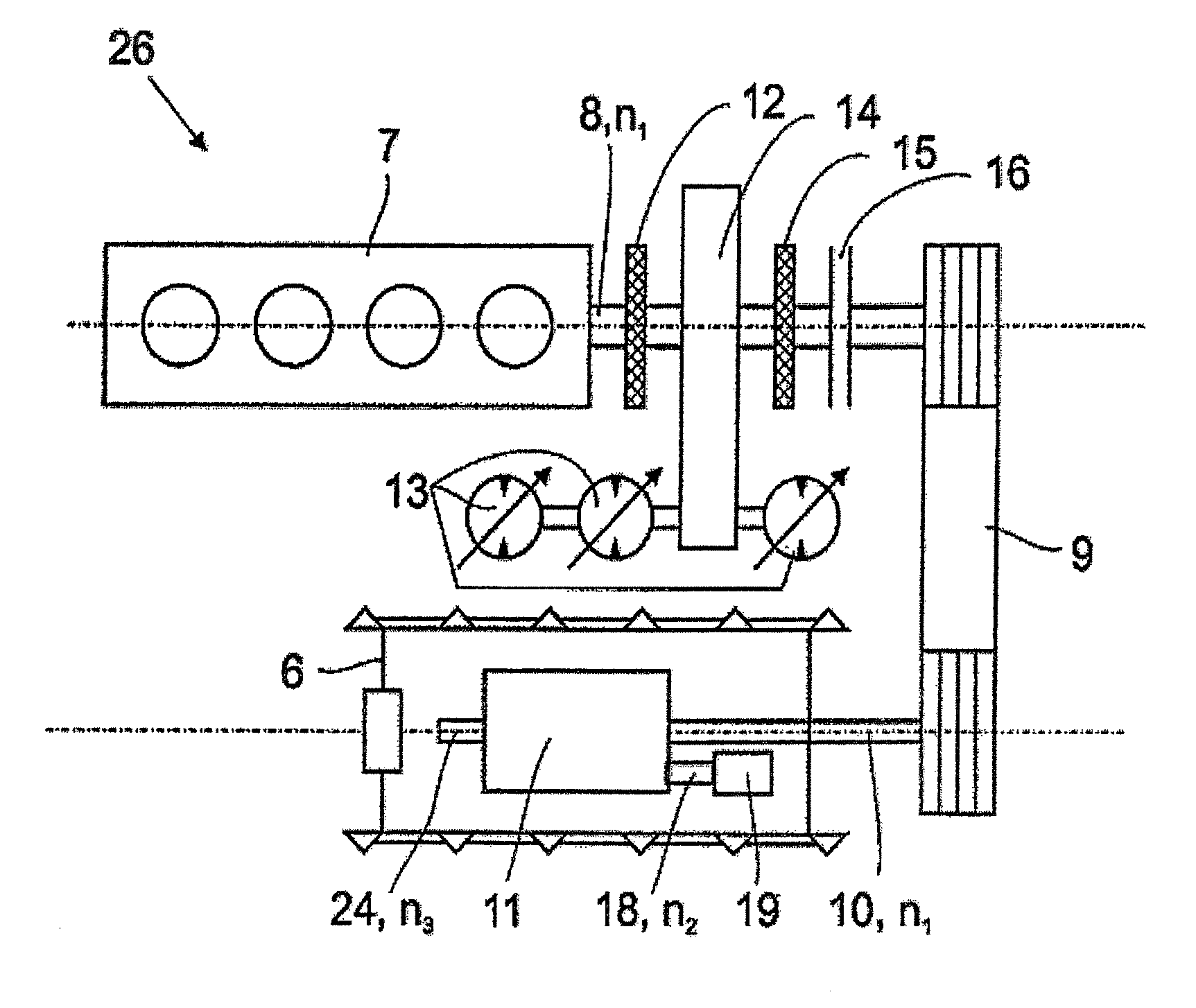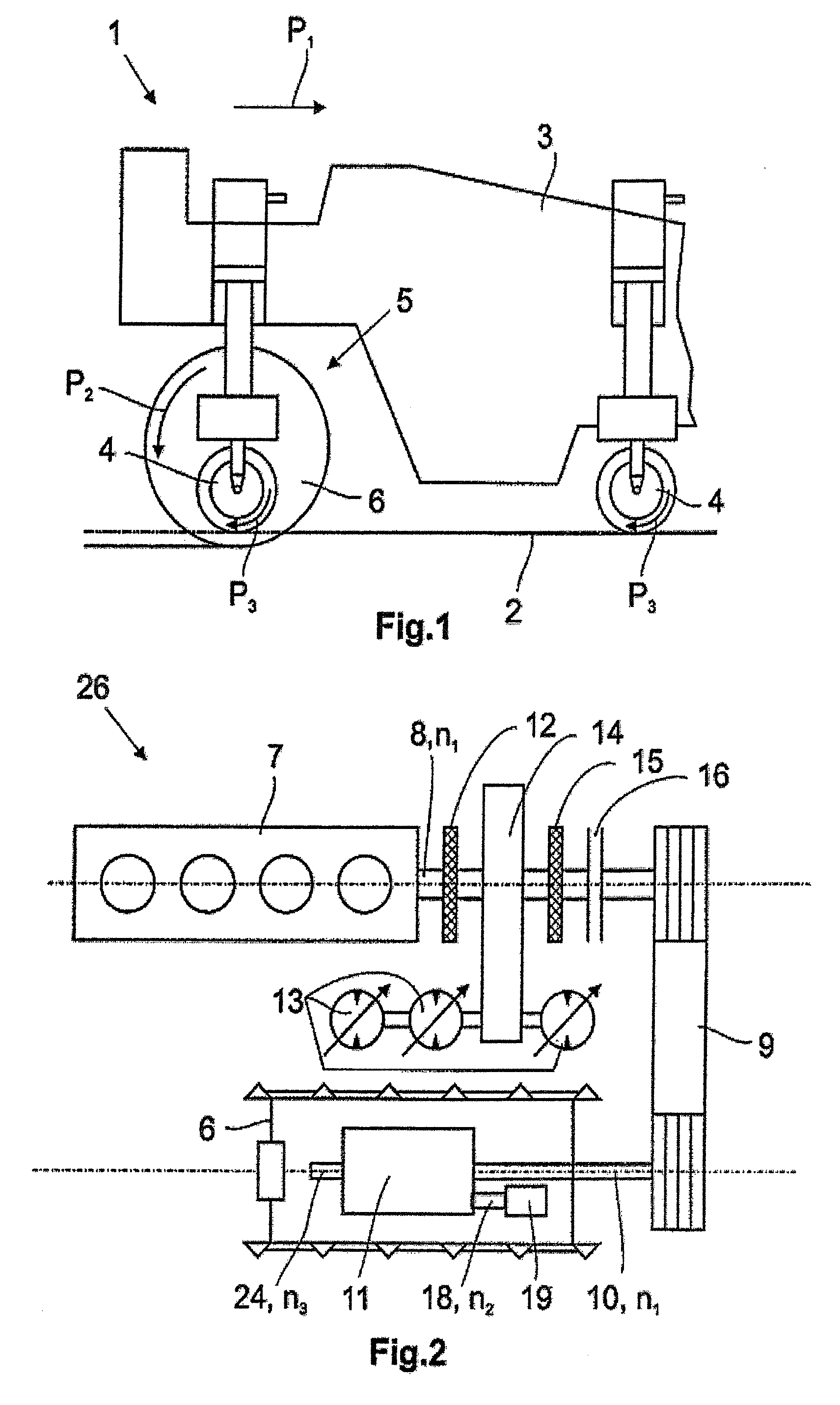Driving Device In A Self-Propelled Construction Machine And Method For Setting A Speed Ratio In Such A Driving Device
a technology of self-propelled construction and driving device, which is applied in the direction of dislodging machines, gearing, and ways, can solve the problems of increasing fuel consumption, shortening the lifespan of components, and generally not being able to couple the milling rotor, so as to reduce the wear of the device components and increase the lifespan
- Summary
- Abstract
- Description
- Claims
- Application Information
AI Technical Summary
Benefits of technology
Problems solved by technology
Method used
Image
Examples
Embodiment Construction
[0031]FIG. 1 illustrates a construction machine 1 in the form of a road milling machine comprising a machine frame 3 and wheels 4 adapted to process a traffic area 2. In the example shown, it comprises a working device 5 designed as a milling rotor 6. In the view shown in FIG. 1, the milling rotor 6 is in a descended working position. The direction of travel during the milling operation is identified by the arrow P1. In this case the direction of rotation of the milling rotor 6 indicated by the arrow P2 is contrary to the direction of rotation of the wheels 4 denoted by the arrow P3.
[0032]According to FIG. 2, the construction machine 1 comprises a driving device 26 for the milling rotor 6. It comprises a first driving unit 7 driving a belt transmission 9 at a first speed of rotation n1 via an output shaft 8. In this case, the first driving unit 7 is the powerful main drive of the construction machine 1 and is designed as an internal combustion engine. A decoupling unit 12, a transfe...
PUM
 Login to View More
Login to View More Abstract
Description
Claims
Application Information
 Login to View More
Login to View More - R&D
- Intellectual Property
- Life Sciences
- Materials
- Tech Scout
- Unparalleled Data Quality
- Higher Quality Content
- 60% Fewer Hallucinations
Browse by: Latest US Patents, China's latest patents, Technical Efficacy Thesaurus, Application Domain, Technology Topic, Popular Technical Reports.
© 2025 PatSnap. All rights reserved.Legal|Privacy policy|Modern Slavery Act Transparency Statement|Sitemap|About US| Contact US: help@patsnap.com



